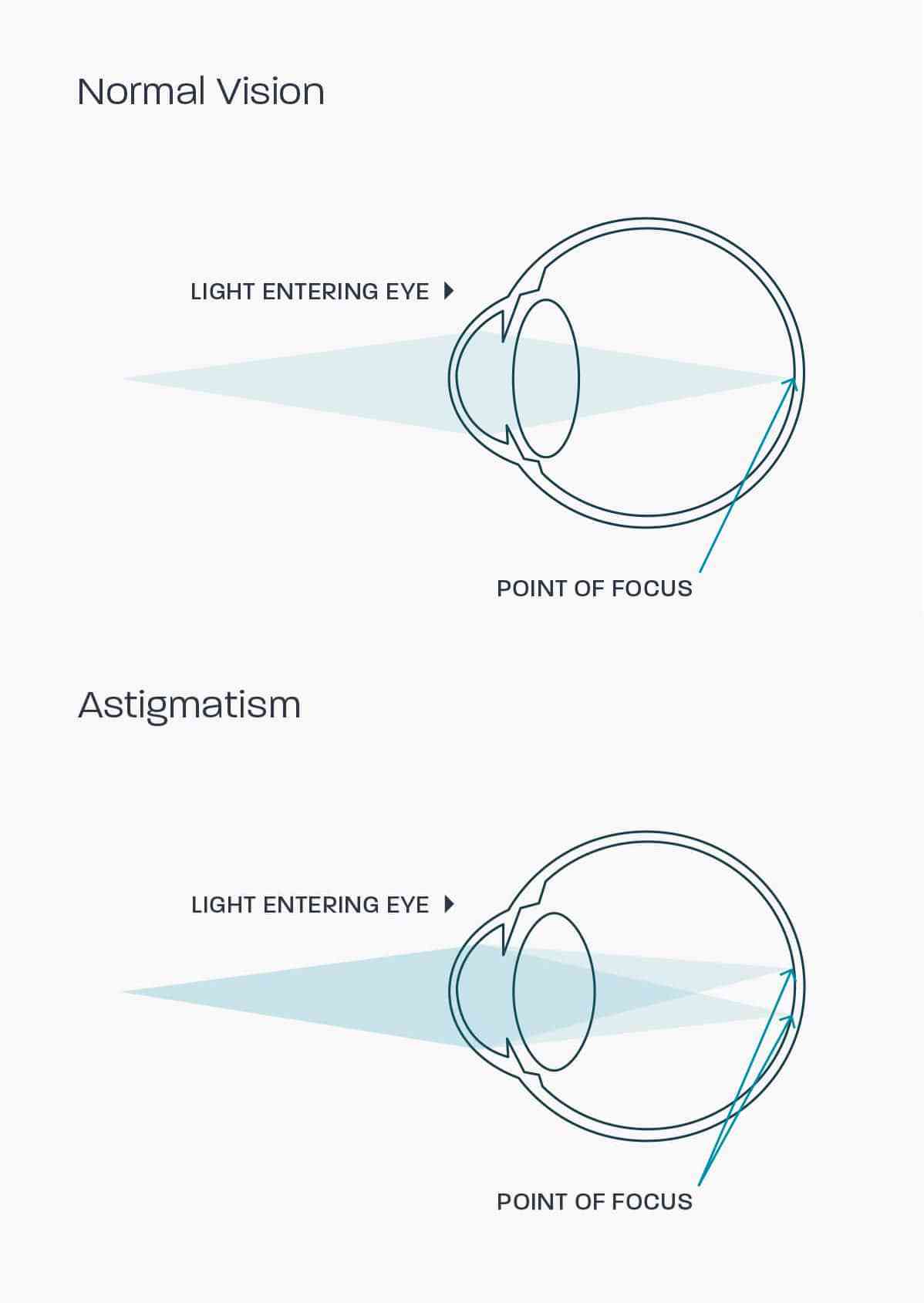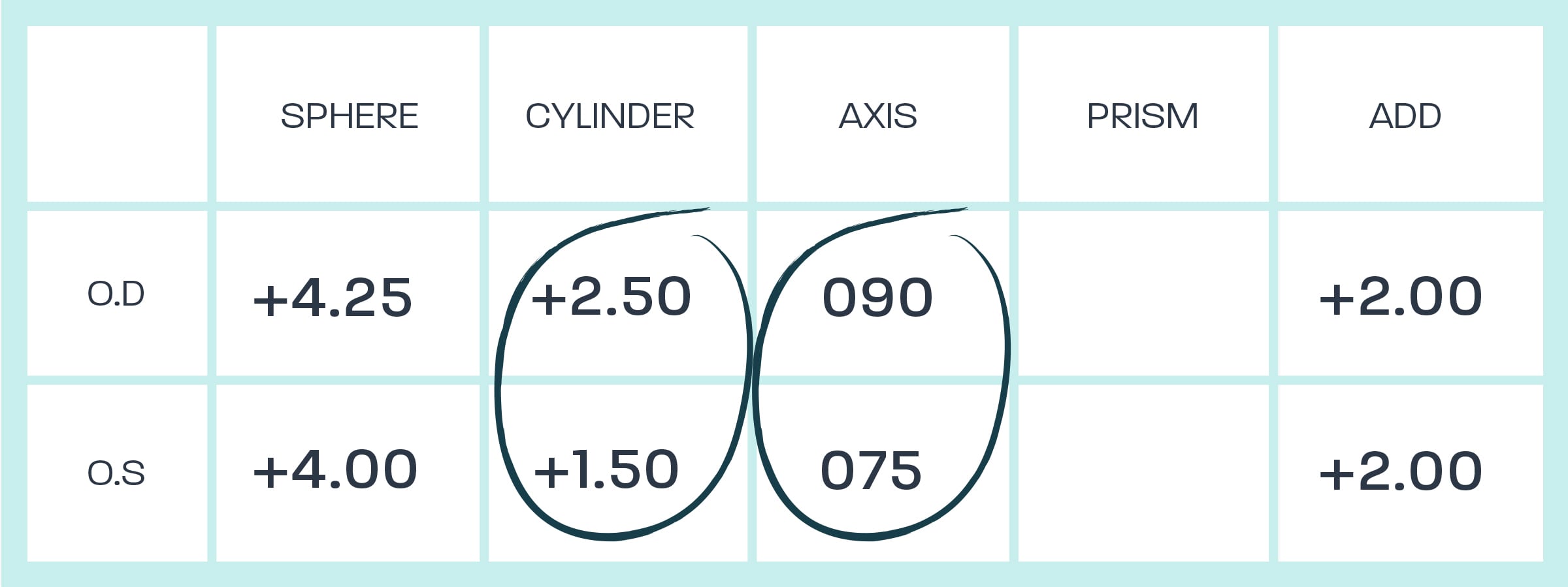Astigmatism
What causes astigmatism?
Astigmatism is caused by an irregularly shaped cornea, so rather than being spherical like a football it’s more like a rugby ball. Light entering the eye doesn’t come to a single focus on the retina, but instead produces multiple points of focus, and these can be in front of the retina, behind it, or a mixture of both. Most people have some degree of astigmatism, and like short- and long-sightedness it’s a refractive error of the eye, not a disease.


Symptoms of astigmatism
Myopia can be corrected by glasses, contact lenses, or surgery. Of course, glasses are by far the coolest option! You’ll still need a back-up pair if you wear contact lenses, and may even need to wear a small prescription occasionally if you have refractive surgery.
If you have astigmatism you’ll likely have blurry vision at all distances, and objects will appear to have fuzzy edges. The brain can filter out some of the fuzziness but if astigmatism is uncorrected, eye strain and headaches are common, as is squinting in an attempt to see more clearly. If you experience any of these symptoms it’s best to book in for an eye examination.
How is astigmatism corrected?
Astigmatism is corrected easily with prescription lenses, and your optician can determine the strength of the astigmatism very accurately and prescribe a ‘cylinder’ in addition to the spherical (SPH) component of your prescription.
The cylinder value works on top of the spherical value to focus light correctly on the retina. The two components lie perpendicularly to each other, and their relevant orientation is indicated by the ‘axis’ value. The axis is measured in degrees and doesn’t indicate the strength of astigmatism, just the direction.
If you have astigmatism your prescription will have a cylinder, often written as CYL, and an axis. The CYL is the amount of astigmatism, and the axis indicates the direction in degrees. It’s possible that you will have astigmatism in one or both eyes.
If you have astigmatism your prescription will look like this:


Choosing glasses for astigmatism
Generally you can follow the same advice as we have given for choosing glasses for myopia or hyperopia, depending on whether the SPH value of your prescription is positive (+) or negative (-). However, as the SPH and CYL parts of the lens are added together there may be some exceptions depending on the lens power and axis direction. Our opticians will be in touch with you to advise if this is the case.
In addition to correcting glasses with astigmatism there are also special ‘toric’ contact lenses available from our sister site Vision Direct, and refractive surgery is also an option. If you’re interested in exploring either of these options we’d recommend you discuss them with your prescribing optician.
